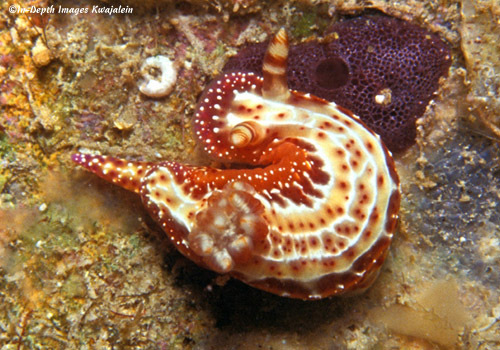
This species was long considered a variant of Hypselodoris maculosa. This misconception was cleared up by Epstein et al (2018), where it was confirmed via anatomy and molecular studies that the species are separate. In addition, there are specific differences in color*. I have seen many of both H. maculosa and H. decorata in the Marshalls and other locations and use the following factors to distinguish them. At least in the Marshalls, Hypselodoris decorata has a more white-spotted red margin (as adults), a distinct purplish tinge at the anterior end and the tip of the tail, and three distinct orange bands on the rhinophores. Also, the mid-dorsal spots tend to be red rather than purple. In the Marshalls, H. maculosa has two bands on the rhinophores (although occasionally there is a trace of a third), the margins tend to be more orange than red and have fewer white spots, and their dorsal spots are more purple than red. A direct photo comparison is here. Of course there is enough variation in both and the forms seem to run together that sometimes it is hard to be sure about a particular specimen, and young ones with not fully developed color are especially difficult. But what convinced me that the two species were different is that whenever I would find a pair, they would invariably be paired up with another of the same color form. I'd never find an obvious H. maculosa paired with an H. decorata, even though both could be found in the same habitat. However, in spite of the relative consistency of the differences I see in Marshall Islands specimens, specimens I have observed in Indonesia and the Philippines as well as many photos on the web are sometimes not as easy to classify. While I certainly do not have all the answers, I think there is more to this story and questions that can be answered only by examining in more detail, including internal anatomy and molecular data, a lot more variations from different places.
Specimens of H. decorata are typically found under rocks along lagoon reefs and pinnacles at depths of about 5 to 15 meters, as well as on the seaward reef to as at least as deep as 40m. We often found them on the pilings under Medren Pier at Enewetak. Hypselodoris decorata was first reported in the Marshalls from Enewetak and Kwajalein Atolls by Johnson & Boucher (1984). John and Lynette Flynn also report one from Rongelap Atoll.

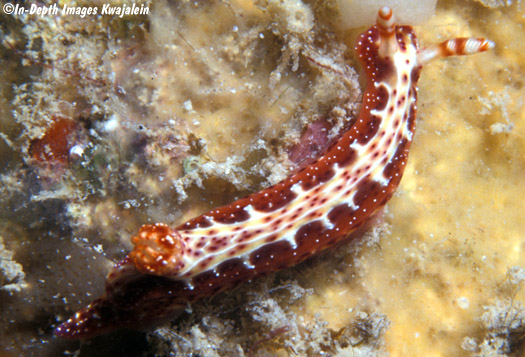
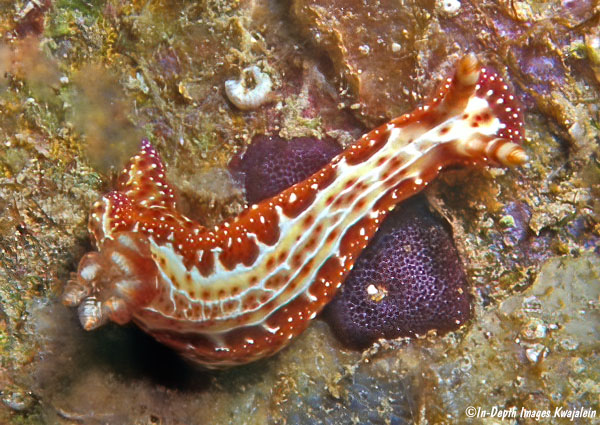
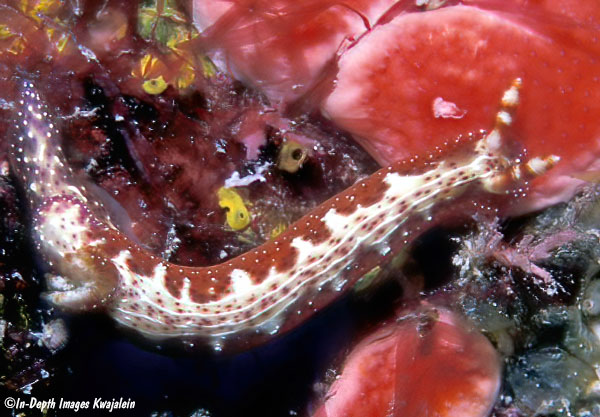
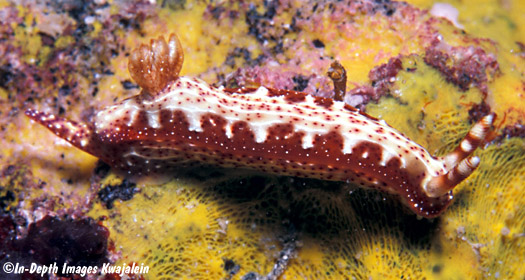
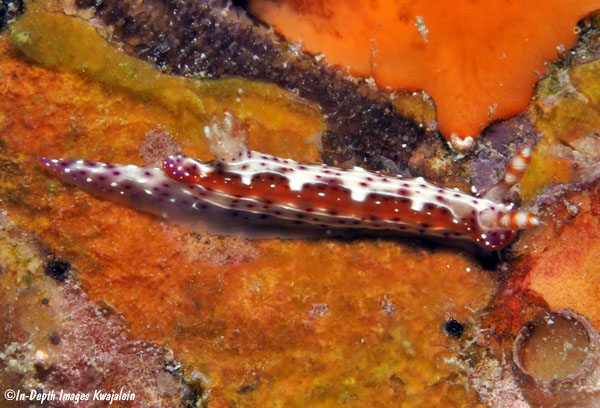
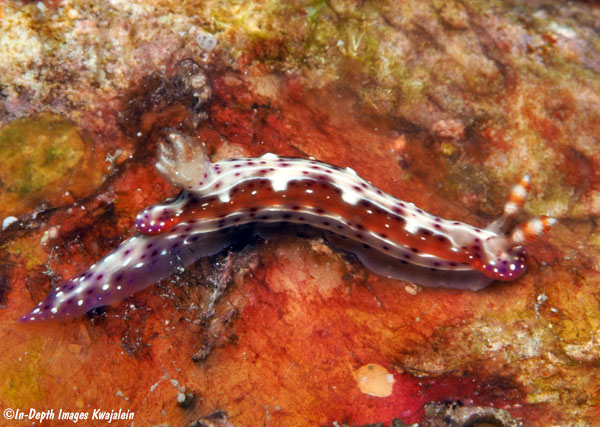
Of course, after saying that H. decorata typically has wide red margins containing numerous white spots, here's one that doesn't. This is a young specimen, only about 15mm long. The larger ones have more red on the margins.
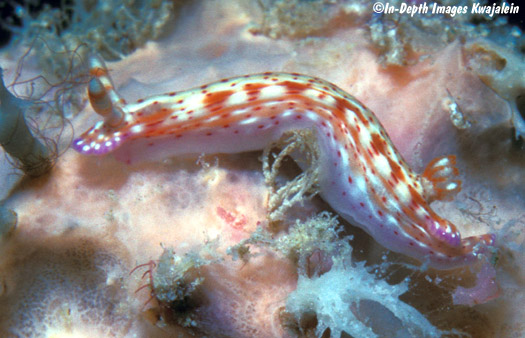
They pair up with like forms.
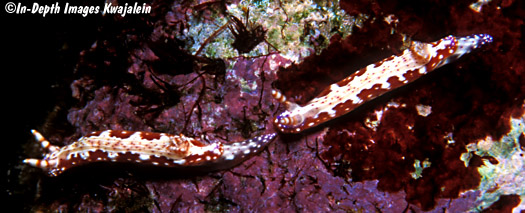
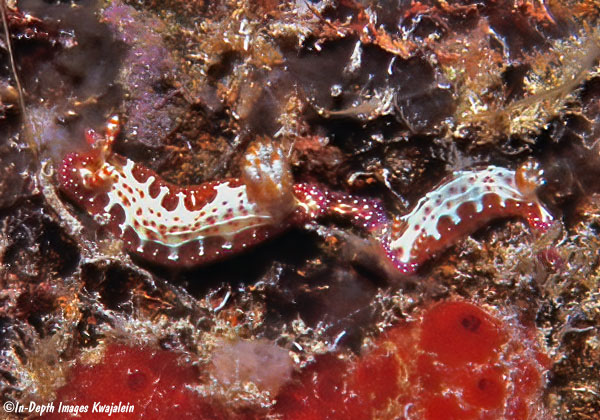
No tiny white spots in the red marginal band, but the three distinct rhinophore rings and red dorsal spots suggest H. decorata.
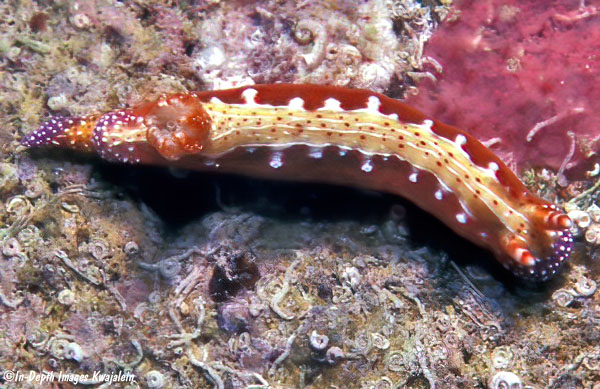
Less distinct third rhinophore band, but otherwise very close to the previous individual.
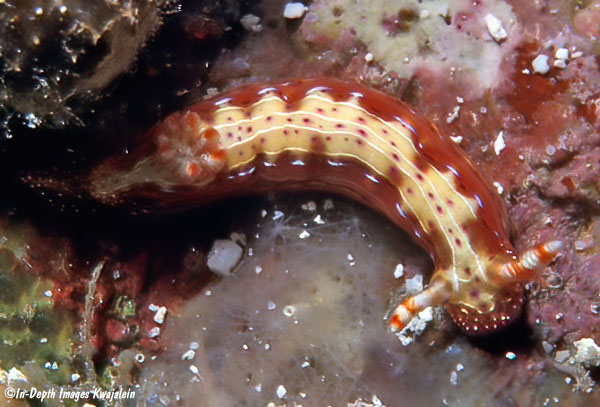
The specimen below was found on the Kwajalein Atoll seaward reef, under a rock at a depth of about 6m, on 7 March 2010.
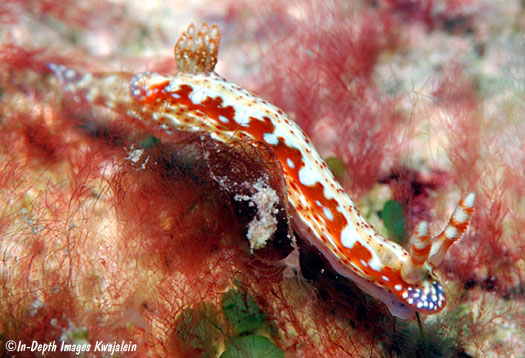
Crawling over Epizoanthus covered sponge at a depth of about 55m on a steep slope.
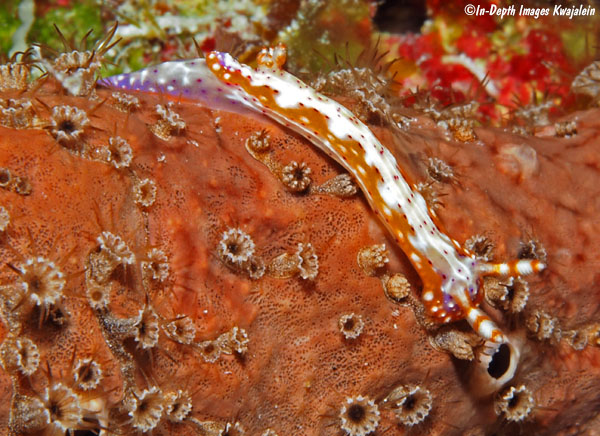
The specimen below was found eating a purple sponge under a rock on a Kwajalein Atoll lagoon pinnacle at a depth of 8m on 18 October 2010.
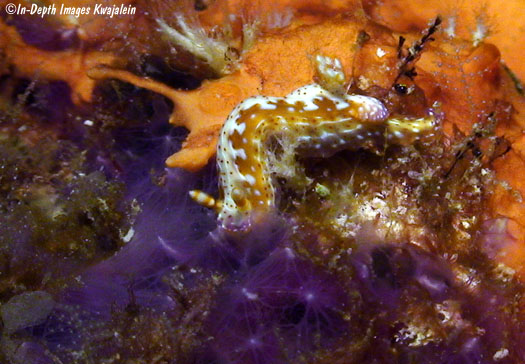
Another on the same sponge.
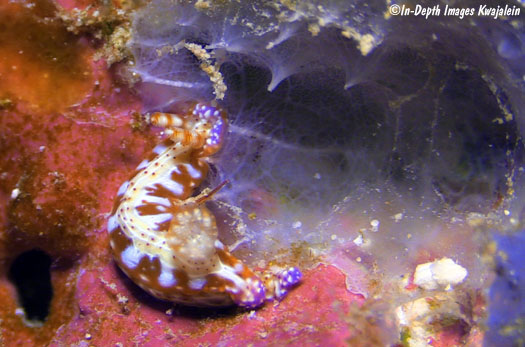
The placement of this Kwajalein specimen is uncertain.
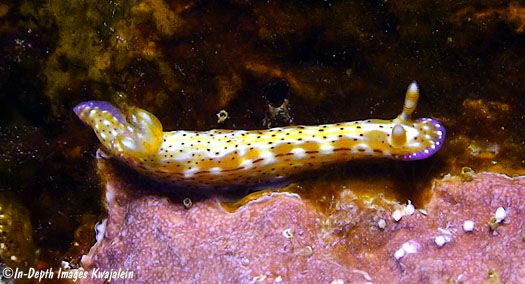
*Since the discussion of color differences between Hypselodoris decorata and H. maculosa on this page was referenced by Epstein et al (2018), it was and will be retained even though the distinction between the two species has now been confirmed.
Created 19 December 2005
Updated 12 November 2021